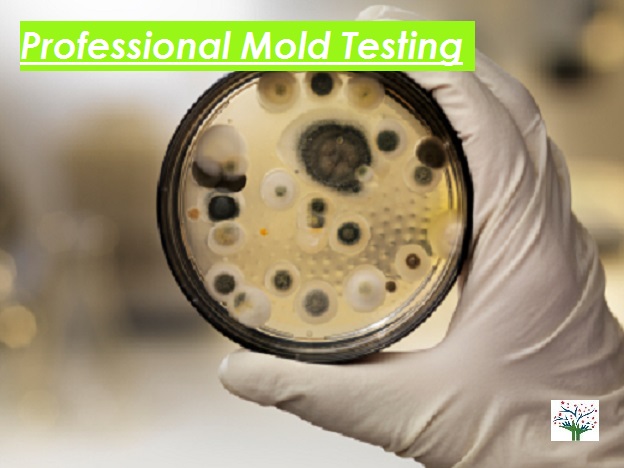Mycotoxin testing Services: Ensuring Quality and Safety in Your Supply Chain
Mycotoxin testing Services: Ensuring Quality and Safety in Your Supply Chain
Blog Article
Exactly How Mycotoxin Screening Helps Avoid Contamination and Protect Food Materials

Mycotoxin screening is an essential method in the food market, serving as a frontline protection versus contamination by damaging contaminants produced by molds. With the application of innovative techniques like High-Performance Liquid Chromatography (HPLC) and Liquid Chromatography-Mass Spectrometry (LC-MS), food manufacturers can properly evaluate and identify mycotoxin levels in agricultural products.
Comprehending Mycotoxins
Understanding mycotoxins starts with identifying that they are toxic secondary metabolites generated by particular mold and mildews, which can infect farming items. These metabolites are not necessary for the development or recreation of the fungis however can have serious ramifications for human and animal health. Mycotoxins are commonly found in staple plants such as corn, wheat, barley, and nuts, where they can multiply under certain problems of dampness and temperature level.
There are several kinds of mycotoxins, each produced by various fungal types. Fusarium species generate trichothecenes and fumonisins, both of which are associated with various acute and persistent health concerns.

Dangers of Mycotoxin Contamination
The risks of mycotoxin contamination are diverse, positioning substantial dangers to both food safety and public wellness. Mycotoxins, toxic compounds created by certain types of fungis, can contaminate a vast range of agricultural products consisting of cereals, nuts, flavors, dried out fruits, and coffee.
Economic effects are another major problem. Contaminated plants can cause substantial economic losses for farmers and food manufacturers because of lowered yields and the requirement for expensive purification steps. In addition, worldwide profession can be substantially prevented as countries impose rigorous mycotoxin regulations to safeguard their populaces, bring about rejected shipments and stretched trade relationships.
Environmental elements such as environment modification aggravate the risk of mycotoxin contamination. Variations in temperature and moisture can create positive problems for fungal development, raising the likelihood of contamination events. Thus, understanding and reducing these risks are critical for ensuring the safety and integrity of international food products.
Approaches of Mycotoxin Examining
Precisely recognizing mycotoxin contamination in agricultural products is essential for protecting public health and maintaining food safety and security criteria. Different methods are employed to detect and evaluate mycotoxins, each offering details benefits and restrictions.
High-Performance Liquid Chromatography (HPLC) is an extensively utilized method as a result of its high sensitivity and accuracy. It entails separating mycotoxins from other materials in a sample, making it possible for precise quantification. In A Similar Way, Liquid Chromatography-Mass Spectrometry (LC-MS) incorporates fluid chromatography with mass spectrometry to give in-depth molecular info, making it particularly valuable for recognizing several mycotoxins at the same time - Mycotoxin testing Services.

Gas Chromatography-Mass Spectrometry (GC-MS) and Thin-Layer Chromatography (TLC) are also employed, each with one-of-a-kind applications. GC-MS works for unpredictable mycotoxins, while tender loving care uses an easier, economical option for preliminary testing.
Advantages of Routine Evaluating
Regular screening for mycotoxins in farming items supplies countless advantages, substantially contributing to public health and food safety and security. By determining contamination early, routine testing aids stop the distribution of harmful foods, thus decreasing the risk of mycotoxin-related ailments amongst consumers. This aggressive technique not only safeguards human wellness however likewise improves the total quality of food products.
Different countries and regions have established rigid limitations for mycotoxin degrees in food and feed. Sticking to these limits via routine screening ensures that distributors and producers satisfy lawful criteria, therefore avoiding penalties and trade obstacles.
In addition, normal mycotoxin screening can lead to significant economic benefits. Early detection of contamination permits for prompt intervention, decreasing prospective losses from extensive contamination. Applying normal screening methods can also minimize recall expenses and relevant responsibilities, which can be financially devastating.
Furthermore, routine screening supplies beneficial data that can notify far better farming methods and storage problems. By understanding patterns of contamination, producers can adopt precautionary actions, therefore contributing and decreasing future risks to the sustainability of the food supply chain.
Executing Testing Protocols
Executing reliable mycotoxin screening protocols is critical for making sure the safety internet and top quality of agricultural items. Each phase has to be inspected to pinpoint where mycotoxin contamination is most likely to happen.
Once important control points are recognized, choosing ideal testing approaches is vital. Common methods include enzyme-linked immunosorbent assay (ELISA), high-performance liquid chromatography (HPLC), and mass spectrometry (MS) Each approach has its toughness and weak points; thus, selecting the proper one depends upon the particular mycotoxin being evaluated, the called for sensitivity, and offered sources.

Lastly, integrating the screening protocols right into an extensive food safety and security administration system is advisable. This improves traceability and allows quick corrective actions when contamination is spotted, therefore protecting the honesty of the food supply chain.
Conclusion
Mycotoxin screening is weblink important in stopping contamination and guarding food products by making it possible for early detection of hazardous toxic substances created by molds in agricultural products. Regular testing enhances brand credibility, monetary stability, and count on in food security by lessening contamination-related losses and preserving high requirements in food manufacturing.
Mycotoxin screening is an indispensable practice in the food industry, serving as a frontline protection versus contamination by hazardous toxins created by mold and mildews. An incorporated technique entailing agricultural techniques, storage monitoring, and regular testing can alleviate the dangers associated with mycotoxin contamination, ensuring food safety and public wellness.
The dangers of mycotoxin contamination are diverse, positioning significant hazards to both food safety and security and public health and wellness.Routine testing for mycotoxins in agricultural items uses various advantages, dramatically adding to public health and food safety and security.Mycotoxin screening is vital in preventing contamination and guarding food materials by enabling official site early detection of unsafe toxic substances produced by mold and mildews in agricultural items.
Report this page